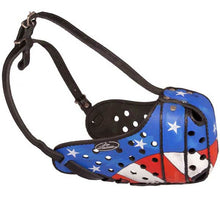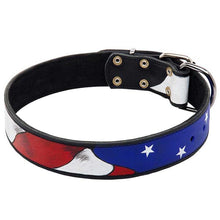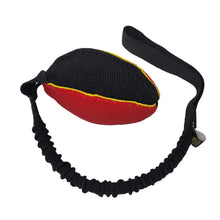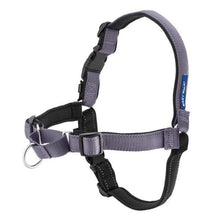How To Deal With Excessive Barking In German Shepherds

Dogs bark. Okay, some breeds don't, but only a few sticklers will argue against the statement "Dogs bark." One of the most vocal dogs, unfortunately, is the German Shepherd. Some of us know more than others just how bad it can be, especially if you live in a neighborhood with close neighbors, or an apartment. So, what can you do about it?
First off, dogs bark for a plethora of reasons. To fix the behavior, you have to start with the problem, and the problem is "Why." "Why is the dog barking?" A lot of the time, it's because the dog is bored or anxious. The average dog sleeps around 11 hours a day. A tired dog is less likely to bark when you're away at work, so make sure your dog has an adequate amount of physical and mental exercise before you leave. A tired dog is more likely to sleep and rest when you’re not at home, thus solving the problem.

Another big reason is a lack of socialization. A dog often barks at people or other dogs if they haven’t been socialized properly to ignore them. A dog that has had positive experiences with people during the socialization process and is taught to ignore them as background noise won't bark at everyone as they simply make their way down the street. Sometimes, something as simple as meeting the mail carrier in a positive way is enough to get a dog to stop barking at them. Use this method to include all different types of people of varying ages and any contraptions that they may be associated with, like bicycles and skateboards, etc.
Don't respond to demands from your dog. If your dog barks or whines in the crate, the door doesn't open until they're quiet. If they bark at you to get a treat, you don't give them a treat until they're quiet. A lot of people train their dog to bark at the door to go out, only to realize their dog likes to come in and go outside nonstop. They end up barking all day long. So be careful to not only not respond to their demands when they bark, but not to create your own barking Frankenstein's Monster!

This may seem counterproductive considering what I just said about being careful not to create your own Frankenstein's Monster of barking, but ... another good method is to teach your dog to bark on command. Hear me out before you judge! Teaching a dog to bark on command isn't teaching your dog to bark for no reason or a reason that they choose when to use. You use your command for them to bark when you want them to, they bark, you reward. If you're diligent in your work of training your dog, your dog surely knows what "no" means. Instead of saying "bark," when they bark without you asking them to, say "no bark." If they know what "no" means and whatever your command for "bark" means, "no speak" or "no bark" is easy enough for most dogs to translate.
Using a "quiet" command is similar to a "no bark" command but a little different. The first entails teaching to control a dog's barking in a roundabout way. Teaching a "quiet" command is a bit more negative, but nothing extreme at all. It simply involves waiting for them to bark and saying in a firm voice "quiet." Most dogs will hear you speak and stop barking to look at you. When they do that, reward. If they start barking again, repeat the process. If that sounds too easy, or you think you know it won't work on your dog, you might be right. But no worries, you just have to find a way to break their concentration from barking to giving their attention back to you (having your dog's attention is called "engagement").

If a firm, yet normal voiced "quiet" doesn't work in getting them to turn their head to look at you, say it a bit louder and sharp. If that doesn't work, whistle. That'll be your "quiet" command, then reward when they look to you. If that doesn't work, put a long leash and collar on them, when they bark, correct them while saying "quiet." You do the least that you have to do to get the desired result, and when you get the desired result, reward them immediately.
We already went over boredom and anxiety, but what if the exercise doesn't work? No worries, there's a solution for that! Toys and puzzle games. Fill a Kong with treats mixed with peanut butter and freeze it overnight. You instantly have a toy a dog can play with for hours before getting all of the goodies out of it. Sodapup licking mats also do well in this category. You can also use treat dispensing toys of your dog's choice and leave them around as well.
As for anxiety, close the windows and blinds, and leave on the radio or TV. Make it feel and sound like you're home and limit outside stimuli. Stimuli = things your dog may potentially bark at, whether it be out of fear, anger, prey drive, or what may have you. So do as much as possible to minimize the very presence of such stimuli.

Get help. There's a lot of help out there for you. If your dog is good for half the day because you go on a morning run, but starts barking halfway through the day? It may suit you and your dog better to hire a dog walker. If you're out of your depth training wise, that's okay too. You can always hire a trainer or look into doggy daycares. If you find a tip or trick or technique or toy or idea that works for you, that isn't found here in the span of this article, that's great! Share it in the comments! Share this article while you're at it. If you love dogs, and dog training, and you don't learn something new every day, make that a new goal.
There's always something else to try, or one more thing you can do to fix an issue, or lessen the symptoms of it at the very least. Don't give up! Thank you for reading, and please leave a like and share.
You may also like: The Importance Of Regular Exercise For Your Dog's Well-being
























